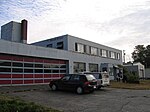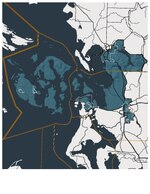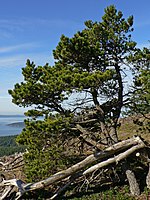Wilson Hotel

The Wilson Hotel (also known as the Wilson Block) is a historic building in downtown Anacortes, Washington, United States. It was built in 1890 during a speculative land boom when cites across northern Puget Sound were competing to become the western terminus of the Great Northern Railway's transcontinental route. It was designed by Pickles and Sutton and built by David Wilson, all of Tacoma, and was built of locally made brick. The building's design is Romanesque with masticated stone bases, rounded windows and roman arches. Rechristened the New Wilson Hotel after a remodeling in 1911, The hotel was expanded in 1926 with a 4-story addition that matched the height of the original 3-story building. It served as a hotel into the 1970s when it was converted to apartments. Recently, the Wilson underwent complete restoration and earthquake retrofitting. The work was completed in 2007. The Wilson currently features retail on the main floor and low income housing on the upper floors.
Excerpt from the Wikipedia article Wilson Hotel (License: CC BY-SA 3.0, Authors, Images).Wilson Hotel
6th Street,
Geographical coordinates (GPS) Address Nearby Places Show on map
Geographical coordinates (GPS)
| Latitude | Longitude |
|---|---|
| N 48.517633333333 ° | E -122.61293611111 ° |
Address
6th Street 1006
98221
Washington, United States
Open on Google Maps







